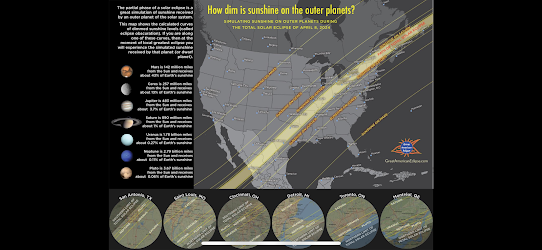Long Range Cloud Escaping
This post covers a very important subject that I suggest that all who visit the totality path think about: what would you do if the forecast calls for cloudy skies at eclipse time in the area that you're wanting to view it, and significantly clearer skies somewhere else? I will be posting some links later that are useful for reviewing weather forecasts and updates. It helps you learn how to take a deeper dive and look at the various weather models. Note that, just because the forecast calls for clouds doesn't mean that you should necessarily leave and drive to clearer skies. Certain types of clouds may dissipate, or going to clearer skies may be too far. Also, the websites I will feature list cloud coverage in percentage. 50% cloud cover could mean that half the sky is clear, and the other half overcast- or it could mean that the clouds are scattered in all directions and overhead, but the total percentage of sky coverage is 50% (meaning: large patches of blue in between). Mor...
